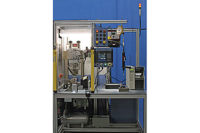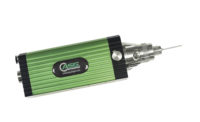All right, Christmas shoppers, be honest. Let’s say your spouse wants a new digital camera. You visit your local camera shop to seek advice from a knowledgeable clerk. The clerk spends several minutes reviewing options, features and brands and ultimately recommends the perfect device for your needs and budget. You then leave the store without buying the camera and instead purchase it from an online retailer for a few dollars cheaper. A month later, you discover the camera shop has gone out of business. You shake your head and lament the vicissitudes of the retail economy.
If you’ve ever done such an underhanded thing, may Santa bring you a lump of coal!
Alas, such unethical behavior is not limited to the world of retail. Some occurs in our world, too. I was chatting recently with an engineer from a systems integrator, a man with some 35 years in the automation business. What began as a conversation about assembly technology morphed into a discussion about the practices of some unscrupulous automation buyers. Do either of these sound familiar?
Let’s call the first, “The Bait And Switch.” A buyer contacts an integrator to obtain a detailed proposal for an automated assembly system. The buyer likes the design concepts, but not the price, and forwards the proposal to a local job shop that builds the system for a much lower price. Certainly, the integrator could sue the buyer for breaching a nondisclosure agreement, but will often just let it go.
This is really no different from that devious camera buyer—only the stakes are much higher. A system proposal from an integrator is not “free consultation.” It represents weeks, if not months, of effort, often with the aid of trusted component suppliers. Don’t be that guy—reward integrators for innovative engineering!
The second unethical practice has to do with money. Let’s call it, “We’re Engineers, Not Bankers!” Some buyers require “90/10 terms” for automation projects. That is, 90 percent of the project’s value is due when the equipment passes qualification at the builder’s facility. The remaining 10 percent is paid when the system has been installed at the buyer’s factory and has passed final acceptance tests.
That’s unfair. Such terms place the financial burden of an automation project solely on the machine builder. Why should an integrator act as a lender? Such terms are particularly bad for small automation firms, which will be unable to compete for the contract.
Ideally, an automated assembly system should be paid for in installments based on milestones. For example, engineers should expect to provide approximately 30 percent of the total cost as a down payment; 30 percent upon completion of engineering; 30 percent after initial run-off; and 10 percent after final installation and acceptance.
With 2018 just around the corner, let’s resolve to treat equipment suppliers and systems integrators as true business partners rather than mere merchants. When they succeed, you succeed, and vice versa.




